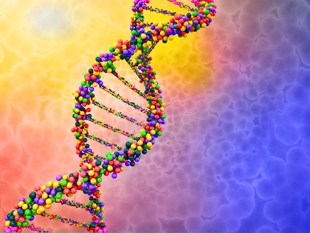Cell Death and Aging
Many cells in the body can divide and replace losses that occur naturally over time. However, there may be a limit to this regenerative capacity. This phenomenon is known as the Hayflick limit (after Dr Leonard Hayflick, who described how cells lose their ability to divide after a certain number of divisions). For example, fibroblast cells from babies can undergo about 50 divisions before they become exhausted. The same adult cells last half as long. Like a cat with nine lives, the capacity for regeneration is finite and eventually life runs out. This also means there must be a ‘biological clock’ that knows how far we’ve traveled and when our time is up.
An example of our body’s timer is telomeres. These are bits of DNA that sit at the end of each chromosome, like the plastic ends of a shoelace that protect it from fraying and make it easier to thread the lace through the eyelets of our shoes. Every time a cell divides, our telomeres get shorter. Eventually they become so short that they can no longer protect the adjacent DNA. This triggers a break that stops further cell division and leads to the death of that cell. However, it’s not only time that can shorten our telomeres. Because of their exposed position, telomeres are also vulnerable to damage by the elements which act in concert to run down the clock.
Slow Aging: Defend, Repair and Maintain
Damage (aging) accumulates when our defense, repair and maintenance mechanisms become inadequate to cope. Many of the interventions currently available to modify aging focus on supporting and augmenting these mechanisms for as long as possible.
The human body has a number of mechanisms to defend against the ravages of time. For example, certain cells generate their own antioxidants. Our immune system is also on the constant look out for threats. Decline in both these important defense systems is thought to significantly contribute to aging.
But if you can’t defend, another way to help keep your castle intact is to repair the damage, where it occurs, when it occurs. For example, in order to limit mutations, there are hundreds of different proteins that recognize and repair any damage to our DNA. However, as we age, these DNA repair mechanisms can become defective. The importance of this change is illustrated by the fact that diseases that cause the DNA repair mechanisms to fail also lead to accelerated aging.
Many of the maintenance and repair tasks in the human body are performed by stem cells. These cells have the ability to repopulate damaged tissues or organs with healthy new cells and contribute significantly to the regenerative process. However, as we get older, the number of stem cells in our body declines, so regeneration and ultimately function becomes compromised.
The failure of defense and repair is often cited as the key reason for aging, yet one of the most important factors that is overlooked is maintenance. Just like our cars, simple things can help to keep things running smoothly and healthy. A simple example is taking out the garbage. As part of our normal function, broken parts are regularly removed, destroyed or recycled. In many studies, the efficiency of this kind of maintenance has been directly related to longevity.
Some Parts Simply Cannot Be Replaced
Our body has a large number of specialized cells that are so caught up in their jobs that they have little or no capacity to divide, like nerve cells in our brain, the beating muscle of our heart and the insulin producing cells of our pancreas. These cells are designed to last a lifetime and cannot be replaced if lost. We are born with as many of these cells as we will ever need. As the years go by, our stocks are irreversibly depleted.
This is why the effects of aging are potentially more important in these cells and why our endowment at birth is one of the most important predictors of outcomes in adult life. The number of ‘filter units’ we are born with in each kidney varies from 150,000 to 500,000. If we lose 100,000 through normal attrition by the time we are 60, it’s not such a problem if we started with 500,000, but if we started with fewer then the loss of 100,000 may put a lot of stress on our kidneys.
Use Them or Lose Them
As we get older, if we don’t use these cells, we tend to lose them. All cells require stimulation for healthy growth and activity. Being deprived of stimulation, like hearing or visual loss, seems to speed up aging. By contrast, those who continue to be active – physically, mentally, socially, sexually and spiritually – not only retain a greater quality of life, but also tend to age more slowly in key areas. Aging can be a positive process, where health feeds into activity and stimulation, and ultimately more health and quality of life result.
Aging is not a single factor, but rather the sum of many factors – some damaging, some protective. In our youth, these forces are kept in balance, but with the passage of time, there is accrual of injury and the ‘memories’ of the injury’s effects. Although the makeup of our bodies is incompatible with indefinite survival, we can still change the odds in our favor. A better understanding of the factors and pathways involved in aging allows us to explore ways to slow aging.







